|
Koolhoven FK-51
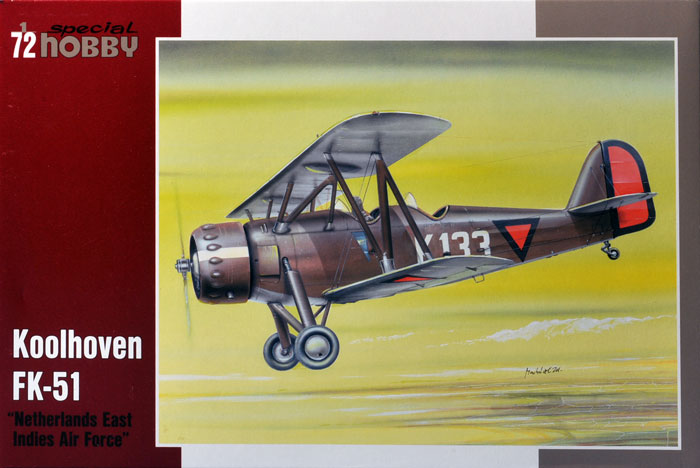
Special Hobby, 1/72 scale
S u m m a r y : |
Catalogue Number: |
Special Hobby kit no. 72175 - Koolhoven FK-51 |
Scale: |
1/72 |
Contents & Media |
49 x grey styrene, 1 x PE fret of 29 parts, 2 x clear vac-form acetate windshields, 1 flat photo negative for triangular side windows in the fuselage, 1 x resin cowling, and decals for four subjects |
Price: |
Available online from Hannants for £13.03, Squadron for US$27.45, and Modelimex for EUR 13.46 |
Review Type: |
First Look |
Advantages: |
Good quality for a limited run kit, and good detail levels for the scale. |
Disadvantages: |
Perhaps too much airframe surgery required to complete the versions covered by this boxing. |
Conclusions: |
A good kit of an interesting and attractive subject. |
Reviewed by Mark Davies

Special Hobby's 1/72 scale Koolhoven FK-51 is available online from Squadron.com
Like most nations in the 1930’s and 40’s, the Netherlands had a simple small biplane to provide primary and intermediate pilot training for their Royal Dutch Air Force, Royal Dutch Naval Aviation Service and Royal Dutch East Indies Army Air Force. This was the Koolhoven FK 51, an aircraft that soon proved popular due to its pleasant handling characteristics. The FK-51 was to appear in a number of versions, mostly differing in the type and power of engine fitted, and with some variations to wingspan and wingtip shape.
A number were sold clandestinely to the Republican forces in the Spanish Civil War (SCW), despite and due to an arms embargo in respect of the conflict. The Republicans used it as a light bomber. The Dutch forces had planned to employ the aircraft as a lightly armed reconnaissance and army cooperation aircraft, but come the German invasion of 1940 it was deemed too slow for operational use, and most were destroyed on the ground.
Tropical service caused problems with the plywood upper wings due to heat, although this was ameliorated by the application of aluminium dope which served to reflect heat away. When Japan attacked the Dutch East Indies the FK-51’s experienced a similar fate to those in the 1940 invasion of Holland.
The Koolhoven FK-51 has been on issue from Special Hobby and Azur. The former in two Dutch markings boxings, and the latter in Spanish Civil War guise. The Dutch examples are essentially the same kit as Azur’s which is tooled by the MPM Group, as are Special Hobby’s being an MPM Group brand.
The kit comes in an atypically Czech top-opening box with attractive artwork on the front. It has exactly the same contents and markings as originally supplied about a couple of years ago in a typical and smaller end-opening box. I have no idea why the box change, but there is room for at least three FK-51 kits in this issue’s box.
The instructions provide a parts map, and a fairly easy to follow diagrammatic assembly format. There is also a brief history of the aircraft. Text is in Czech and English. Painting and decal guides are quite adequate black & white shaded 4-view drawings.
I have numerous Special Hobby kits, and this one is quite typical of the brand; being generally cleanly moulded with good surface detail and conventional parts break down. I did notice however that there almost seems to be two trailing edges to both surfaces of the elevators, in that there is a visible line running roughly parallel to the actual trailing edge. It’s hard to feel if this line will show under paint, and it may not be an issue. Just look out for it if you buy one, and check with some primer to see if any work needs to be done to hide it.
There is quite adequate interior detail for the scale. This consists of moulded framing on the insides of the fuselage halves, floor panel, seats, instrument panels, rudder bars and control columns in styrene. The PE set provides seatbelts and a panel of switches in the front cockpit to enhance this sub-assembly.
You have a choice of two forward facing seats applicable to the trainer, or of replacing the rear seat with a gunner’s stool and pintle-mounted machine gun for the army cooperation version. If you select to have a rear gunner you will need to do some cutting of the fuselage to enlarge the cockpit opening for gun travel, just as was the case with the real aircraft. Some care will be needed to do this, but the instructions give a scale illustration of where and what shape to make the cut out.
A simple but quite adequate engine is moulded as one piece with pushrods, and has a PE ignition harness to dress it up a nicely. The engine is enclosed in a very well cast resin cowling.
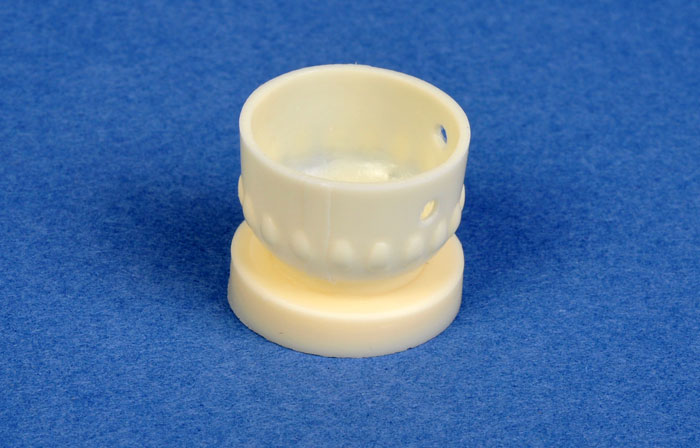
Two simple styrene exhaust stubs mount through holes in the cowl. These would benefit from having holes drilled into their ends or being replaced with suitable tubing for added realism. No less than three propellers are included, but as only one is applicable to this boxing the spares box will get a top up.
Construction sequence and parts breakdown is conventional for the type, except there is the inconvenience of having to remove all four wing tips 6.5 mm from their tips, as these need to be replaced with slightly different shaped tips that come as separate parts. This may keep tooling costs down for MPM, and is surmountable by the modeller, but a choice of wings would have been much nicer.
Various small PE items like control actuators and strut mounted pitot tube finish the airframe off.
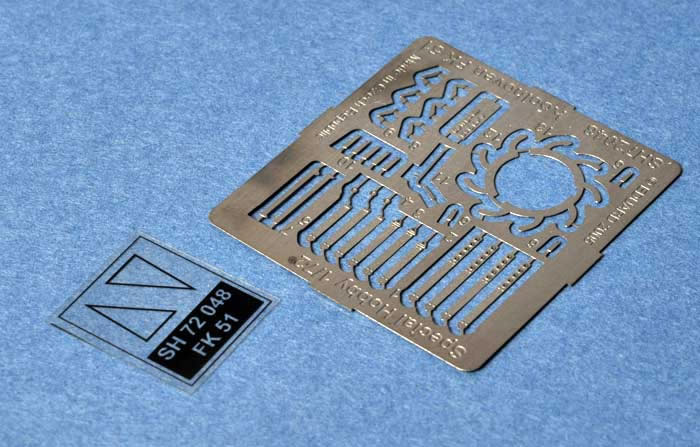
The windscreens are clear and sufficiently delicate to be convincing.
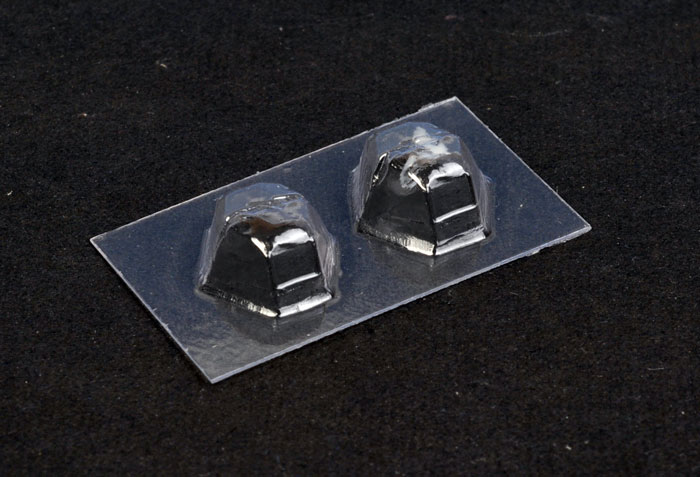
The instructions give a clear rigging diagram, which is quite simple on this subject.
The four decal options are all similar quite similar, having an aluminium top wing over chocolate brown upper surfaces, with light blue under surfaces. Colour call outs are generic and cross-referenced to the Gunze Sanyo paint range. National insignia are either black outlined orange neutrality triangles, or the Dutch roundel with equal blue, white, red segments and orange centre.
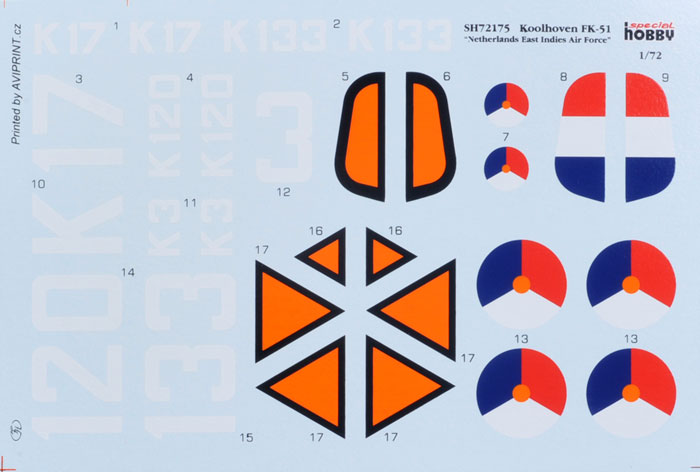
The decals appear to be well printed with good opacity.
Gripes over wing surgery aside, this is a nice limited run kit of an attractive 1930’s trainer. I suspect that the Azur SCW boxing will have proven the most popular, but for Dutch aircraft fans or those who simply like something a bit unusual, then this kit is for you. Recommended.
Thanks to MPM/Special Hobby for the review sample.
Review Text Copyright © 2009 by Mark Davies
Images Copyright © 2009 by Brett Green
Page Created 27 April, 2009
Last updated
27 April, 2009
Back to HyperScale Main Page
Back to Reviews Page |
Home
| What's New |
Features |
Gallery |
Reviews |
Reference |
Forum |
Search